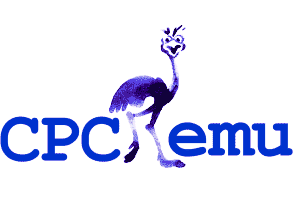
 | ||
 | ||
 | ||
 | ||
 |  |  |
 | ||
 | ||
 | ||
 |
Start the emulator now. At the very first time you have to choose your language before we can begin.

You see the "boot" screen of a CPC in yellow on blue. In fact, a CPC boots very fast - because the whole operating system is kept in ROMs. There is even a complete software development environment which is also immediately available - the Locomotive BASIC - after you've turned the computer on.

If you type some characters or words, you will notice the steady "Syntax Error" message after you press the "Return" key. This is because you are not in a text editor, even if it looks like one. You can rather compare it to the command line in a Shell (or a DOS prompt). You have to enter special instructions that the CPC knows and understands. These are described in detail in the BASIC manual, which was shipped with the real CPCs. There are digitized versions available.

One of these instructions is the "print" command. After the word "print" you can give a list (separated by semicolons) of what you want to be "printed" to the screen - see the screenshot above. You may ask what this is useful for. Normally, you will use this immediate or interactive mode rather rarely. In most cases, you write a program which does a certain task. After you typed it you can run it again and again as you like. You can even save it onto cassette, disc or harddisc (which is all the same outside the emulator).Try the following:

Type it the same way you see it in the screenshot. You might not notice immediately if you make a typo, so be careful. Did you notice the line numbers in front of the commands? This is the hint for the CPC to wait with the execution of the instructions until you explicitly tell it to do it. Guess what? Type "run" to start the program and see the result.

If you made a typo, you can edit the mistyped line with the command "edit linenumber" (always plus Return, of course). Then you can move within the line with the cursor keys. Press Return if you are finished or ESC if you don't want to change anything.
To halt a running program, press ESC once. To stop it, press ESC a second time. Then you are in immediate mode again. You can edit lines or list the whole program with the command "list". When doing a "list" you can also halt the listing with ESC once and finish it with ESC twice. As you can see, in the listing all commands are printed in upper case letters. This can be used to detect typos in commands.
You may ask what the mysterious "chr$(10)" in the list of parameters means. It is a second command, called a function, with a parameter "10" of its own. Try to remove it: One time remove only chr$(10) and the last semicolon, but leave the first one where it is. A second time, remove the first one, too. Do you see the difference? Can you imagine, what the trailing semicolon is good for?
This was a first dive into the CPC's BASIC. There are much more possibilities: colour graphics, 3-channel sound, timers, joysticks, ... And this is just BASIC. Imagine what can be done with pure machine code.
Third-party Software
If you don't want to write programs (or learn it), you can of course benefit from the wide spectrum of already available software. It reaches from applications for sound, graphics or word processing to great game hits from the late 80's.
If you have found some software you have to move the downloaded files to the DISC directory for most convenience. You don't need to unzip the ZIP archives.
To "insert" a disc into an emulator disc drive, you choose a file from the file requester you get with the F3 key or use the disk icon from the main menu (available by clicking or touching the upper half of the screen). You can browse through the directories and ZIP files and choose a DSK file. For convenience, you can type the first letters of a file to find it more quickly. The requester then jumps to a matching filename.
Demos
A demo is a program intended to demonstrate the capabilities of a computer as well as of its creator. Many of them are really pieces of art. Three are included with version 2 of CPCemu. Many others are available on the web .
Finally: Games
I'd like to recommend one or two games here that can be played without having and reading a manual:
- Nebulus: A worldwide jump&run hit from 1988. Lead the cute and green frog-creature-inspector to the top of illegaly built towers to break them down. Perfect!
- Super Wonderboy in Monsterland: Little boy has to free his girl and fight against bats, monsters and other vermin. Nice candy graphics in different stages. Use "space" to open doors!
- Bubble Bobble: Two cute dinosaurs try to make it to the top by making bubbles to defeat their enemies. Absolute allstar all-time hit. Pure fun!
- Pinball Dreams: A great pin-ball machine emulator, released in 2019. The game is well-known from the AMIGA. Unbelievable to see it on the CPC.